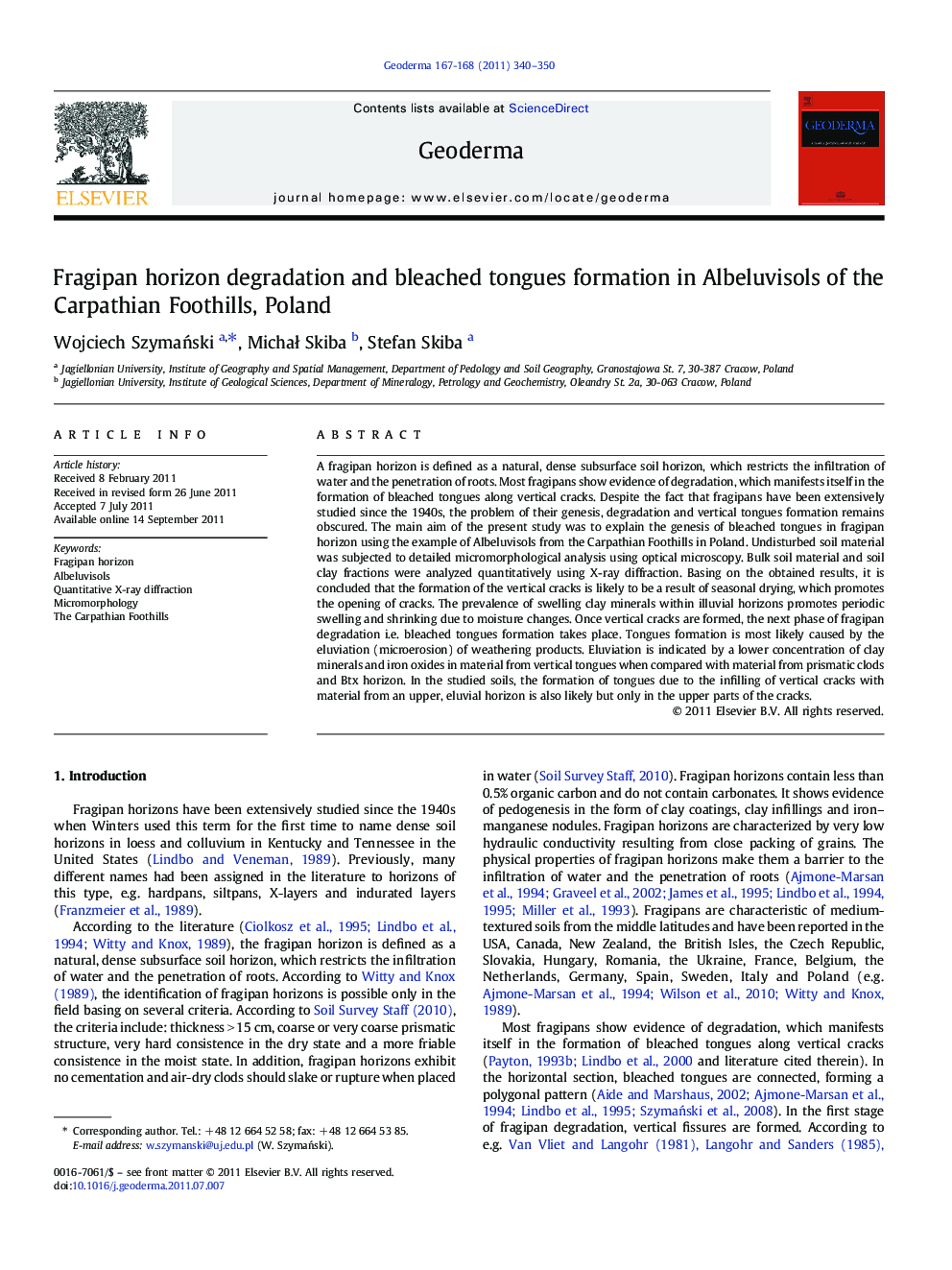| کد مقاله | کد نشریه | سال انتشار | مقاله انگلیسی | نسخه تمام متن |
|---|---|---|---|---|
| 4574045 | 1629505 | 2011 | 11 صفحه PDF | دانلود رایگان |

A fragipan horizon is defined as a natural, dense subsurface soil horizon, which restricts the infiltration of water and the penetration of roots. Most fragipans show evidence of degradation, which manifests itself in the formation of bleached tongues along vertical cracks. Despite the fact that fragipans have been extensively studied since the 1940s, the problem of their genesis, degradation and vertical tongues formation remains obscured. The main aim of the present study was to explain the genesis of bleached tongues in fragipan horizon using the example of Albeluvisols from the Carpathian Foothills in Poland. Undisturbed soil material was subjected to detailed micromorphological analysis using optical microscopy. Bulk soil material and soil clay fractions were analyzed quantitatively using X-ray diffraction. Basing on the obtained results, it is concluded that the formation of the vertical cracks is likely to be a result of seasonal drying, which promotes the opening of cracks. The prevalence of swelling clay minerals within illuvial horizons promotes periodic swelling and shrinking due to moisture changes. Once vertical cracks are formed, the next phase of fragipan degradation i.e. bleached tongues formation takes place. Tongues formation is most likely caused by the eluviation (microerosion) of weathering products. Eluviation is indicated by a lower concentration of clay minerals and iron oxides in material from vertical tongues when compared with material from prismatic clods and Btx horizon. In the studied soils, the formation of tongues due to the infilling of vertical cracks with material from an upper, eluvial horizon is also likely but only in the upper parts of the cracks.
► The degradation of the pan in periglacial conditions due to contraction is unlikely.
► The formation of the vertical cracks is likely to be a result of seasonal drying.
► The predominance of swelling clays within the pan promotes swelling and shrinking.
► Tongues formation is caused by the eluviation and microerosion of weathering products.
► Percolating water along vertical cracks washes out clay minerals and iron oxides.
Journal: Geoderma - Volumes 167–168, November 2011, Pages 340–350